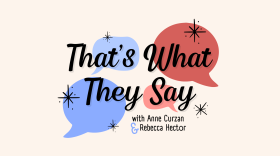This week we’ve got the classic Commodores song “Three Times a Lady” on our minds. That’s because we were wondering how it would’ve sounded had Lionel Richie insisted on consistent adverbs and used “thrice a lady” instead of “three times a lady.”
Our listener Kai Pan has been thinking about “thrice” too, though it’s unclear whether the Commodores are involved. Kai said, “Wouldn’t it be nice to have ‘once, twice, thrice,’ instead of ‘once, twice, three times?’ Why has "thrice" fallen out of use?’ I really like this word.”
Somehow, “You’re once, twice, thrice a lady” doesn’t have quite the same ring to it. Especially since Richie would’ve had to sing “thrice” like it was a two-syllable word to make it fit. However, we stand with Kai – we really like “thrice” too.
“Thrice” goes back to at least the 1100s. The Oxford English Dictionary has the first citation at 1175 with the meaning “three times,” as in “twice or thrice a day.” By the 14th century, it could also mean “three times as much,” such as a sum that is more than thrice as great as some other sum.
Though it started falling out of use around 1800, “thrice” hasn’t completely fallen off the language map. Though some find it archaic, “thrice” pops up in current usage occasionally, often in a literary sense. For example, there’s a 2013 book titled “Thrice Told Tales.” Or here’s a 2007 Guardian article that refers to a “thrice-married man” in its headline.
Unsurprisingly, the trio “thrice,” “three,” and “third” are all related. This makes sense, but it makes even more sense once you realize that “third” used to be “thrid.” Over time the “r” and the “i” were transposed — a process known to linguists as metathesis — and that’s how we ended up with “third.”
Keeping with our theme, we also talked about number-related adverbs like “secondly” and “firstly.” To hear the full discussion, listen to the audio above.






